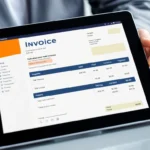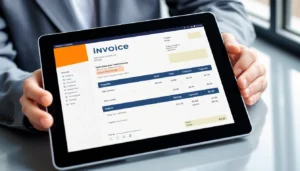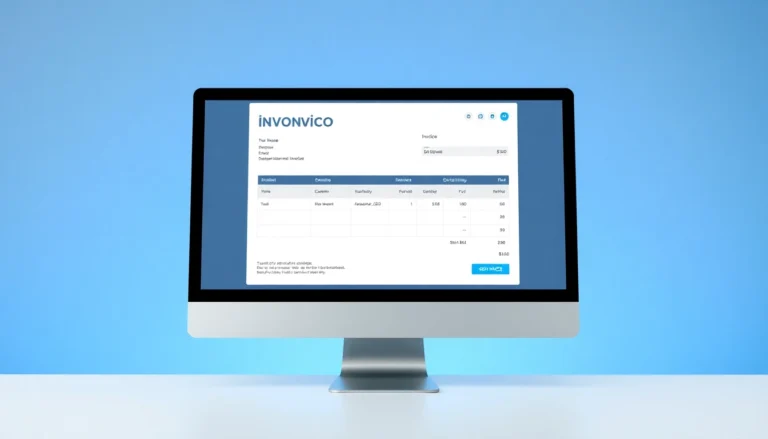Understanding SME Loans: Definition and Benefits
Small and Medium Enterprises (SMEs) form the backbone of the Philippine economy, contributing significantly to employment, innovation, and overall economic growth. For these businesses to thrive and expand, access to appropriate financing is critical. One of the primary financial tools available to SMEs is the SME loan. This form of credit offers vital capital that enables small and medium-sized businesses to invest in growth opportunities, manage operational cash flows, and withstand market fluctuations. In this comprehensive guide, we will explore what SME loans are, how they function, and why they remain an essential component for business success in the Philippines and beyond.
What is an SME loan and how does it work?
An SME loan is a type of financial assistance provided specifically to small and medium-sized enterprises, often characterized by certain criteria related to revenue, number of employees, or asset size, as defined by local regulations. Unlike large corporate loans, SME loans are designed to be more accessible and tailored to the unique needs of smaller businesses.
These loans can be utilized for various purposes, including working capital, purchasing new equipment, acquiring inventory, funding expansion projects, or even refinancing existing debts. The mechanics of SME loans involve a borrowing agreement between a lender—be it a traditional bank, government-backed institution, or alternative lending platform—and the SME borrower. Borrowers agree to repay the loan over a specified period with interest, according to predetermined terms.
In the Philippines, an SME loan often involves a simplified application process, flexible eligibility criteria, and various repayment options to accommodate different business models and cash flow patterns. Many lenders also offer collateral-free options or collateral that is specific to the business assets, making access to finance less cumbersome for entrepreneurs.
To understand how these loans work in practice, consider a typical scenario: an SME owner needs ₱500,000 to upgrade their manufacturing equipment. They approach a lender that specializes in SME financing, submit necessary documents such as financial statements and business permits, and after assessment, secure the loan. Repayments are then made monthly over a stipulated term, with the business benefiting from improved productivity and increased sales capabilities.
Key advantages of SME loans for small and medium enterprises
1. Facilitates Business Growth and Expansion
Access to capital through SME loans empowers businesses to scale operations, reach new markets, and introduce innovative products or services. For example, a local food enterprise can expand its production capacity, enabling it to serve larger orders and increase revenue streams.
2. Enhances Cash Flow Management
SMEs often face cash flow constraints due to delayed payments, seasonal demand, or unforeseen expenses. Short-term SME loans help stabilize financial operations, ensuring business continuity and preventing disruptions.
3. Supports Asset Acquisition and Technology Upgrades
Whether purchasing new machinery, upgrading IT infrastructure, or investing in modern POS systems, SME loans provide the necessary funds to keep businesses competitive and efficient.
4. Improves Business Credit Profile
Timely repayment of SME loans can build or improve a business’s creditworthiness, facilitating access to larger funding in the future or better credit terms with suppliers.
5. Financial Flexibility and Customizable Terms
Modern SME loan providers often customize repayment periods, interest rates, and collateral requirements, allowing businesses to choose options that best fit their cash flow and growth plans.
6. Encourages Financial Inclusion
For entrepreneurs in remote or underserved areas, SME loans from government or non-traditional lenders provide a pathway to formal financing, stimulating local economic development.
Types of SME loans available in the market today
1. Microloans
Designed for very small businesses or startups, microloans typically range up to ₱50,000 to ₱250,000. These are ideal for purchasing inventory, initial capital, or small equipment. They often have shorter repayment periods and simplified approval processes.
2. Term Loans
These loans provide a lump sum of capital, repayable over a fixed period, usually from 1 to 10 years. Useful for larger investments such as property purchases or major equipment acquisitions, they often require collateral.
3. Working Capital Loans
Targeted at financing daily operational expenses, these short-term loans help maintain smooth business operations, especially during seasonal peaks or cash flow gaps.
4. Lines of Credit
Flexible financing tools allowing businesses to borrow up to a pre-approved limit, draw funds as needed, and pay interest only on the amount used. This is particularly useful for managing fluctuating expenses or inventory procurement.
5. Equipment Financing
Specifically designed for acquiring machinery, vehicles, or technology, this type of loan uses the equipment itself as collateral, making approval easier and often offering competitive rates.
6. Government-backed Loans
Supported by institutions such as the Philippine Small Business Corporation (SB Corp) or the Department of Trade and Industry (DTI), these loans often feature favorable terms, lower interest rates, and assist in financial inclusion initiatives.
How to Qualify for an SME Loan: Requirements and Best Practices
Essential eligibility criteria for SME financing
- Business Registration: Proper business permits and registration documents from government agencies.
- Operational History: At least 6 months to 2 years of consistent business operations, depending on the lender.
- Financial Records: Audited or unaudited financial statements, cash flow statements, and tax declarations.
- Creditworthiness: Good credit history or a credible business track record.
- Collateral (if required): Assets such as property, equipment, or inventories, although some lenders offer collateral-free options.
Preparing your business documents and financial records
Having complete and accurate documentation significantly improves your chances of loan approval. Prepare the following in advance:
- Business registration certificates and permits
- Latest financial statements and tax returns
- Bank statements for the past 6-12 months
- Business plan or proposal outlining usage of funds and growth strategy
- Legal documents such as partnership agreements or franchise licenses
Tips to improve your chances of loan approval
- Build a solid credit profile: Regularly pay bills and avoid overdue debts.
- Maintain clear financial records: Accurate bookkeeping and timely tax filings present a professional image.
- Demonstrate business viability: Provide clear evidence of cash flow, profitability, and growth potential.
- Offer collateral or guarantee: Collateral can reassure lenders and help secure better terms.
- Apply with reputable lenders: Established financial institutions and government-supported programs often have more flexible criteria.
Choosing the Right SME Loan Provider
Comparing traditional banks and alternative lenders
While traditional banks are often perceived as the go-to source for SME financing due to their security and extensive experience, alternative lenders like fintech platforms or microfinance institutions have emerged as competitive options, especially for startups or businesses with less-established credit profiles. Benefits of traditional banks include lower interest rates and broader repayment options, but they typically have stricter eligibility criteria and longer processing times.
On the other hand, alternative lenders tend to offer faster approval processes, shorter requirements, and more flexible terms. However, these may come with higher interest rates or fees. Evaluating your business’s specific needs, cash flow capacity, and long-term growth plans will guide you toward the right lender.
Interest rates, repayment terms, and collateral considerations
Interest rates vary based on lender type, loan size, and repayment period. Traditional banks may offer rates as low as 6-12% per annum, whereas alternative lenders might range from 14-25%. Longer repayment periods reduce monthly payments but increase total interest paid.
Collateral requirements depend on loan size and type. Microloans and unsecured lines of credit often don’t require collateral but may have higher rates. Larger loans typically demand assets such as land, equipment, or receivables.
Evaluating lenders’ credibility and customer reviews
It is crucial to consider the credibility and reputation of your chosen lender. Look for certifications, partnerships with government agencies, and customer feedback. Reviews can provide insight into approval times, customer service quality, and transparency in fee disclosures. Engaging with lenders that have established credibility ensures smoother processing and reliable support throughout your loan journey.
Steps to Apply for an SME Loan Successfully
Gathering necessary documents and completing the application
Preparation is key to a successful application. Collect all required documents early, including business and personal identification, financial statements, business plans, permits, and collateral documentation if applicable. Ensure all information is accurate and up-to-date.
Complete the application carefully, providing truthful and comprehensive details. Some lenders now offer online portals for faster submission and processing, streamlining the overall experience.
Understanding the approval process timeline
Approval times vary depending on the lender and loan type. Microloans or microfinancing through government agencies might take a few days to a week, while larger or collateralized loans could require several weeks for processing and approval. Regular follow-ups and prompt submission of additional documents can expedite the process.
Common pitfalls to avoid during the application process
- Incomplete or inaccurate documentation
- Overestimating your repayment capacity
- Applying for a loan amount beyond your actual needs or repayment ability
- Failing to research and compare lenders thoroughly
- Ignoring the fine print—interest rates, fees, and repayment terms
Maximizing Your SME Loan’s Impact on Business Growth
Strategic use of funds for expansion, equipment, or inventory
Once approved, utilizing the loan wisely can significantly accelerate your business progress. Create a detailed plan outlining how each peso will contribute to specific goals, whether expanding operations, investing in new technology, or increasing inventory levels. Track spending meticulously to ensure funds are directed toward high-impact activities.
Monitoring loan repayment and maintaining financial health
Regularly review your cash flow and financial statements to ensure timely repayments. Establish a repayment schedule aligned with your revenue cycles. Avoid overextending borrowing and build reserves to cushion unforeseen challenges.
Leveraging additional resources and support programs
Complement your funding with business development programs, mentorship, and government grants or subsidies. Agencies like the Department of Trade and Industry (DTI) offer training and advisory services that enhance your capacity and resilience.





















